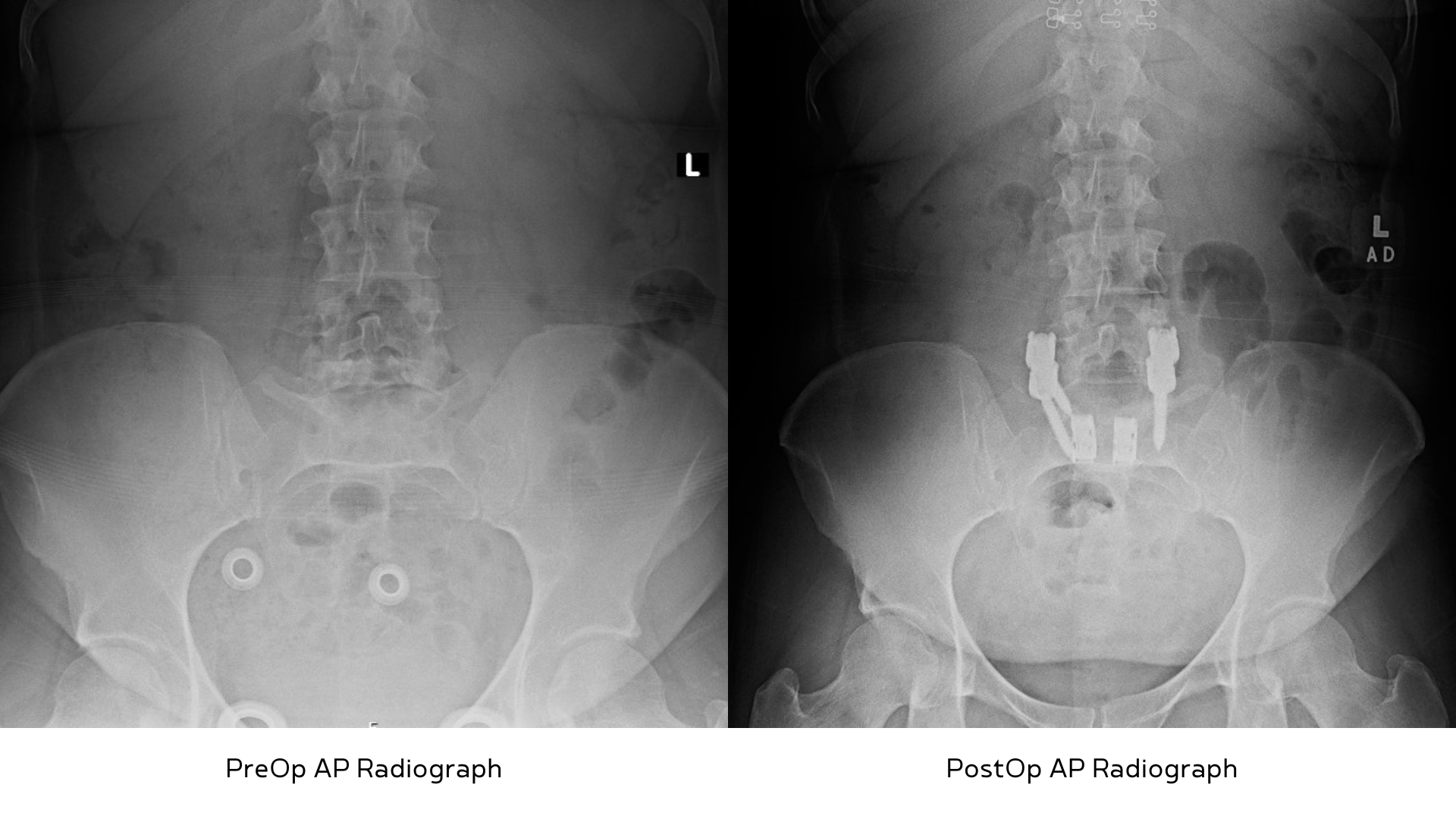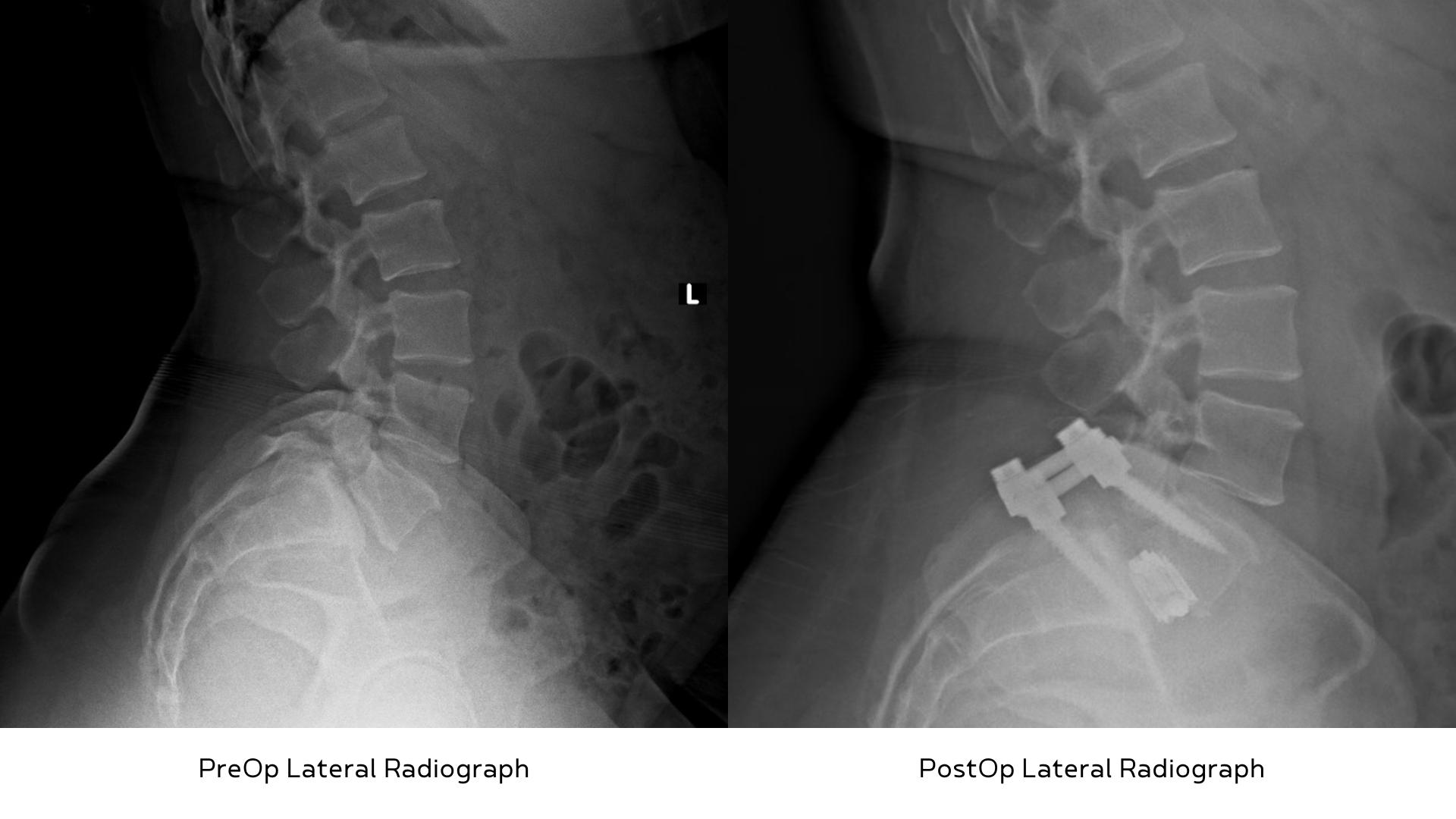The Role of 3D Imaging and Navigation in Minimally Invasive Spine Surgery
Minimally invasive spinal surgery (MISS) is a set of techniques developed to minimize tissue damage during surgery. This is achieved using intraoperative imaging and special tools which can be tracked beneath the skin, allowing the entire procedure to be performed through a small incision, only two to three centimeters in length. Muscle and other soft tissues are left intact resulting in faster recovery and shorter hospital stays for patients. Given the established benefit of less tissue injury, we have seen more and more hospitals and spine centers invest in cutting-edge Spinal Navigation Systems to allow more surgeons to adopt MISS. I will briefly review the technology and then provide some examples of the impact MISS has had on my patients.
Spinal Navigation Systems are comprised of two technologies (Intraoperative 3D Imaging, Tracer Technology) which seamlessly integrate to allow surgeons to “see through” the intact skin and muscle to the spinal anatomy below. Intraoperative 3D Imaging includes sequential radiographs or a CT scan to render a real-time image of the patient’s anatomy. It can be used throughout the body to image the musculoskeletal system. Intraoperative 3D Imaging can be combined with preoperative imaging to create a live three-dimensional rendering of the patient’s spine. Real-time, precise location of surgical instruments can be layered on top of this 3D imaging using tracer technology. Together, Spinal Navigation not only creates a surgical map, it also allows us to see our surgical instruments within the map. This stereotactic navigation is achieved using optical cameras, patient-specific sensors, machine vision technology and sophisticated algorithms. We can utilize Spinal Navigation Systems for preoperative planning to customize size and selection of screws, rods and other hardware for our patients.
In spine surgery, MISS is not always practical when balancing the success of surgery and safety. In particular, MISS can be challenging when doing multi-level fusions, in patients with congenital abnormalities or in revision surgery. In addition to having access to appropriate technology, surgeons performing MISS require dedicated training on the different surgical approach and to utilize specialized MISS instruments. Now, with the wide adoption of Spinal Navigation Systems in operating rooms, many more surgeries can be done in a manner which is safe, efficient, and minimally invasive. During surgery, using 3D imaging tools can assist in contributing to greater precision and accuracy.
In my practice, I routinely use MISS for single-level lumbar microdiscectomy, lumbar laminectomy, and lumbar fusion. Using MISS versus a more traditional “open” technique has had a tremendous impact on my patients. For example, I recently performed a minimally invasive lumbar fusion at the L4-L5 level on an active woman in her mid-fifties. She had a condition called spondylolisthesis with stenosis which is a narrowing of the spinal canal. As a result, she was suffering from severe back and leg pain with progressive weakness. An avid golfer and pickleball player, she had not been able to do either for six months because of the worsening leg symptoms. I explained our surgical plan to perform the surgery using a Spinal Navigation System with the goal to shorten her recovery time. For comparison, a traditional “open” technique for the same surgery would generally result in a two-to-three-day hospital stay and return to full activity at three-to-four months. She was eager to proceed and get back to her active lifestyle. A few weeks later, she underwent a successful MISS decompression and fusion, and was discharged home from the hospital the following morning. By day seven, she no longer required pain medication. At her six week post operative visit in the office, she had fully recovered and was cleared for full activity.


Advances such as Spinal Navigation Systems allow surgeons to treat patients using minimally-invasive techniques safely. Patients benefit from less post operative pain, shorter hospital stays, and faster recovery times. Over the past ten years, hospitals around the country are investing in this important spine surgery trend. In the years to come we expect to see more and more complex spinal procedures being successfully performed using MISS and Navigation.
Author
Related Physicians
- All Specialties
- Hip
- Knee
- Spine
- Sports Medicine
- Shoulder & Elbow
- Foot & Ankle
- Hand & Wrist
- Physical Medicine & Rehabilitation
- Orthopaedic Oncology
- Orthopaedic Trauma & Fracture Care
- General Orthopaedics
Physician Language
- All Languages
- English
- Persian
- Spanish
- Italian
- Chinese
- German
- Tamil
- Turkish
- Taiwanese
- Mandarin
- Hindi
- Punjabi
- Korean
- Gujarati
- Arabic
- Telugu
- Vietnamese
- Swedish
Filter Physicians
Search
Specialties
- All Specialties
- Hip
- Knee
- Spine
- Sports Medicine
- Shoulder & Elbow
- Foot & Ankle
- Hand & Wrist
- Physical Medicine & Rehabilitation
- Orthopaedic Oncology
- Orthopaedic Trauma & Fracture Care
- General Orthopaedics
Physician Language
- All Languages
- English
- Persian
- Spanish
- Italian
- Chinese
- German
- Tamil
- Turkish
- Taiwanese
- Mandarin
- Hindi
- Punjabi
- Korean
- Gujarati
- Arabic
- Telugu
- Vietnamese
- Swedish
Please select your region to view available physicians.
Select Your Region- All Locations
- {{item.title}} {{distanceText(item)}}




